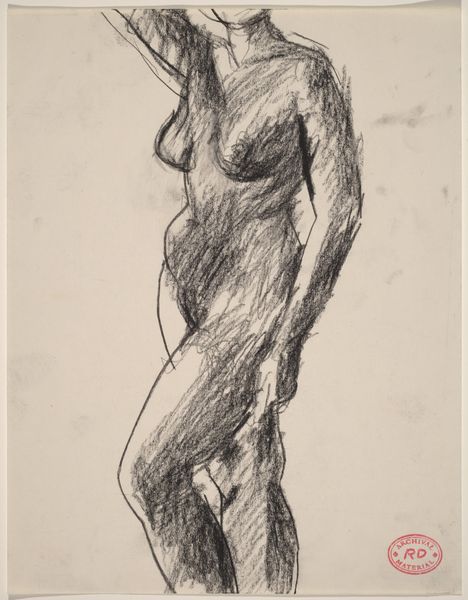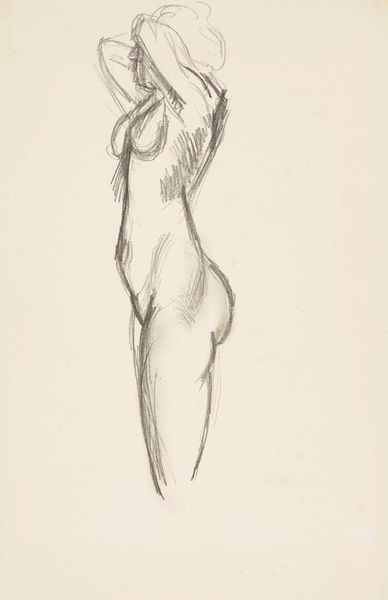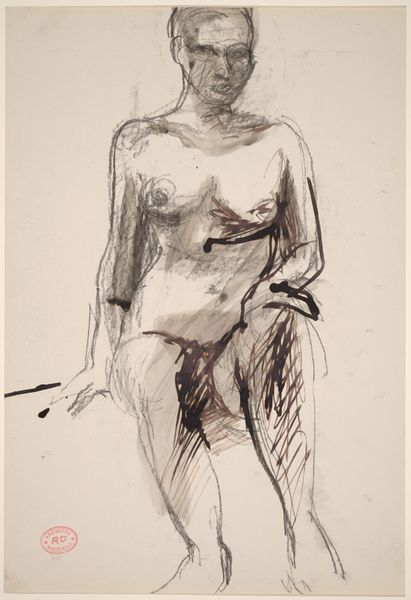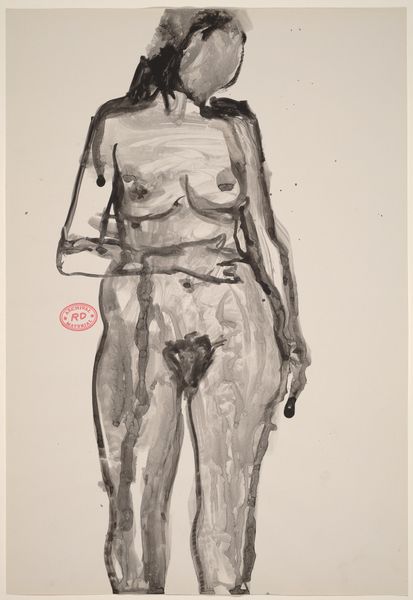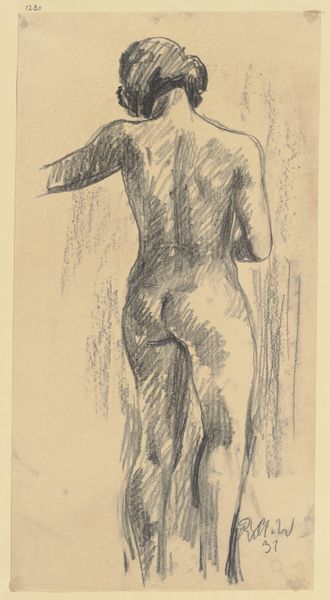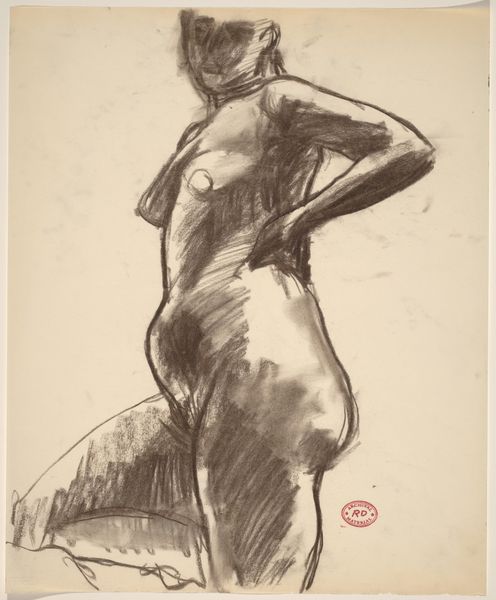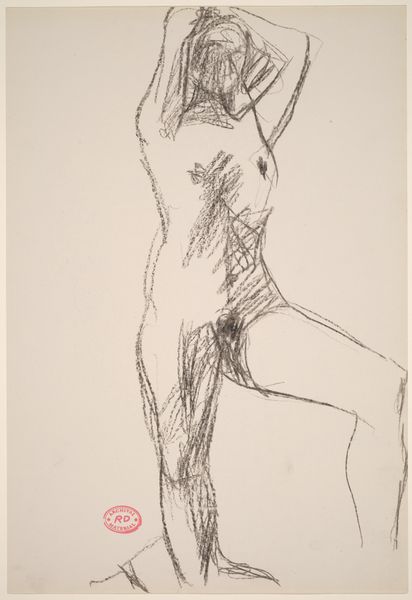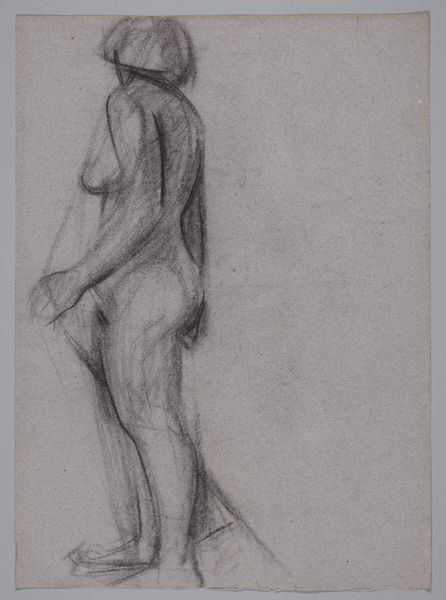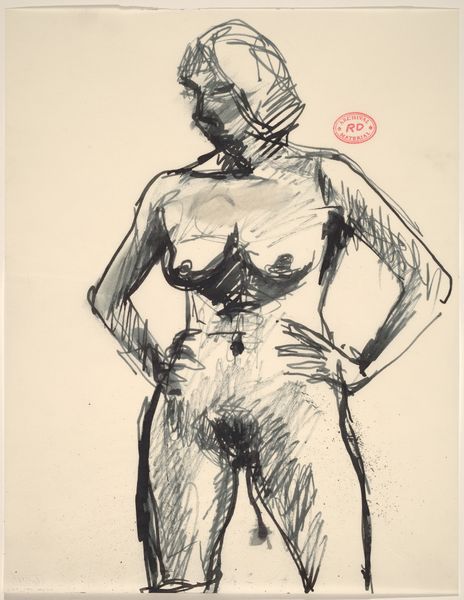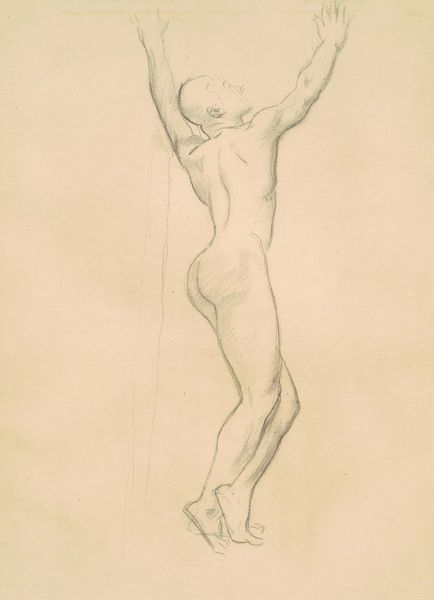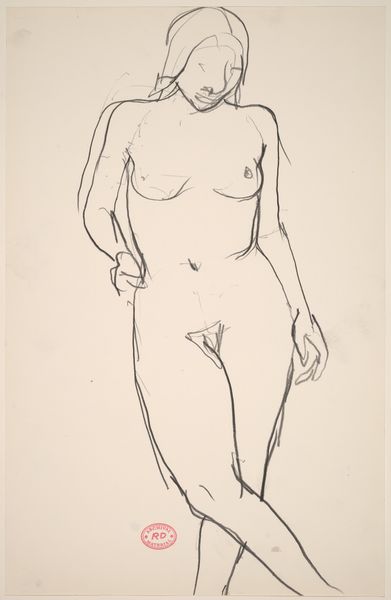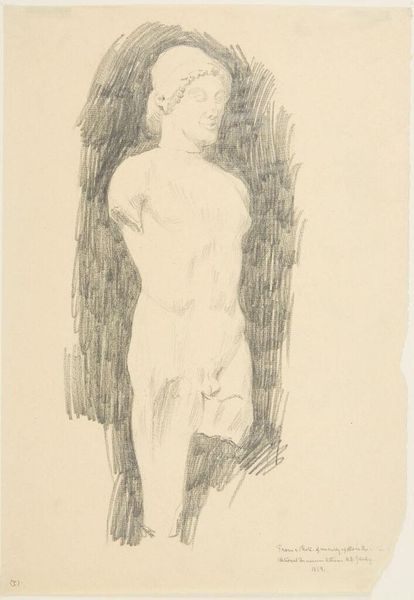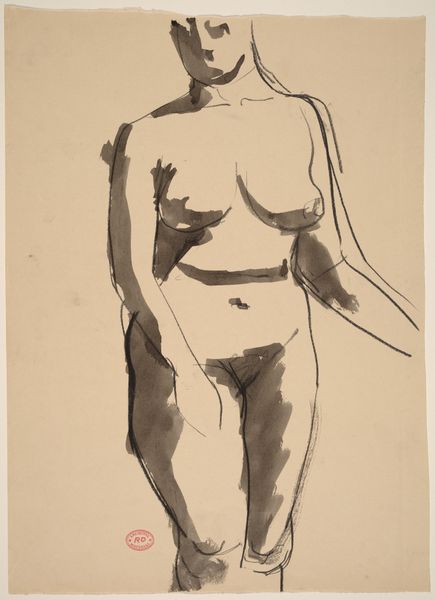
drawing, pencil
#
portrait
#
drawing
#
figuration
#
pencil drawing
#
pencil
#
expressionism
#
portrait drawing
#
nude
#
modernism
Copyright: Public Domain: Artvee
Curator: Looking at "Stehender Akt," or "Standing Nude," a pencil drawing executed by Lovis Corinth in 1914, one is struck by the rawness and immediacy of the artist's hand. Editor: The hatching, the rapid strokes...there's something unfinished, even anxious, about the way he's rendered the figure. Almost as if Corinth wanted to capture something fleeting, before it could vanish. What sort of pencil was he using? A very soft lead, I imagine? Curator: That’s insightful. Considering the socio-political climate of 1914, with Europe teetering on the brink of war, it makes you wonder if this sense of urgency permeated even the artistic sphere. The figure itself becomes a study in vulnerability. Editor: Definitely. The lack of strong definition to the face adds to this sense of…obscurity, almost dehumanization. One can really see his process – how each stroke builds upon the previous one, revealing form from the blank page. Curator: Indeed. Corinth was deeply embedded in the Berlin Secession, an artistic movement that pushed back against academic conventions. He portrays the body not as an idealized form, but with a kind of brutal honesty, which some would find offensive at the time. Editor: And that honesty extends to the materiality itself, doesn't it? The tooth of the paper, the varied pressures of the pencil…this drawing reveals a lot about the physical act of its making, about the labor involved in bringing this image into being. It reminds us this is a physical trace of a particular maker. Curator: It absolutely does. In a world moving rapidly towards industrialization and mechanization, works like this underscored the enduring importance of the human hand and its capacity for emotional expression. Editor: The kind of expressionism captured through line work here definitely still feels powerful. Corinth uses humble tools – pencil and paper – but wields them to create something incredibly expressive and…human. I’d really love to get an analysis of that paper stock. Curator: Me too! Thank you both for exploring that expressive capacity of the humble materials with me. Editor: Thanks for lending the socio-political insights of its role in expressionism.
Comments
No comments
Be the first to comment and join the conversation on the ultimate creative platform.
